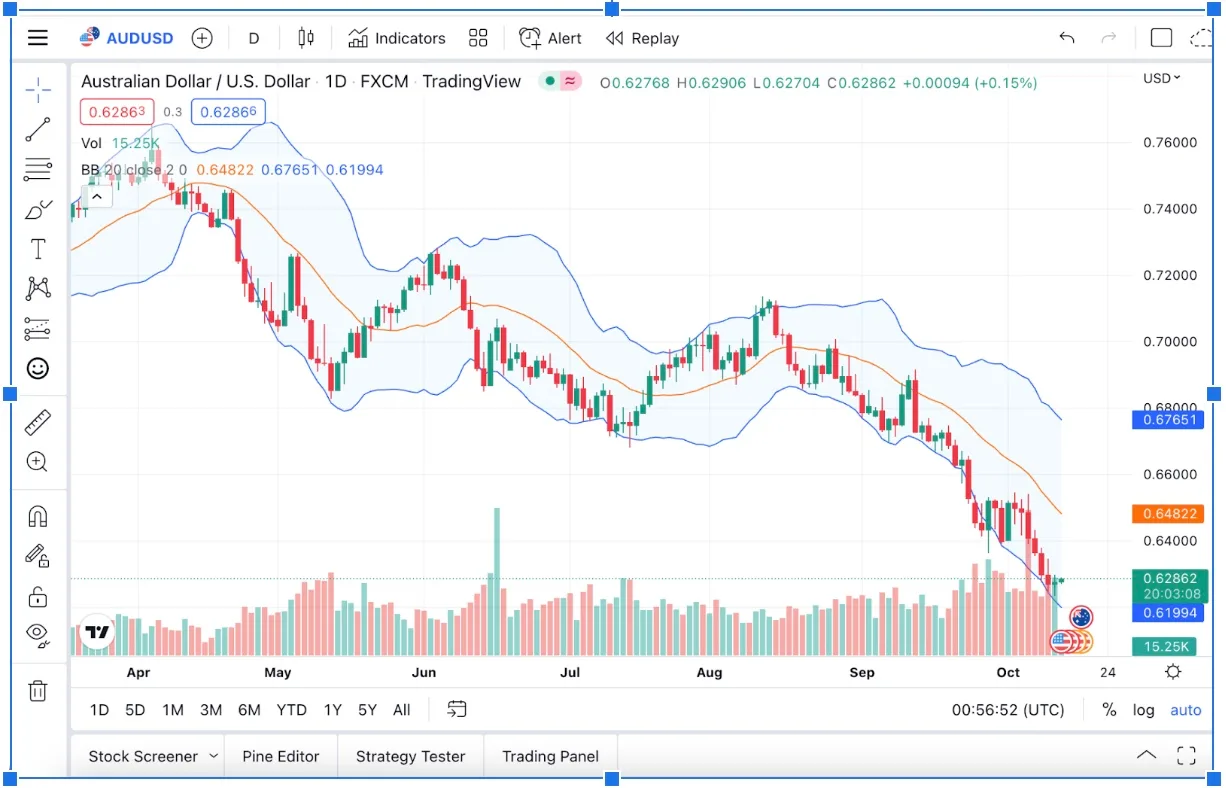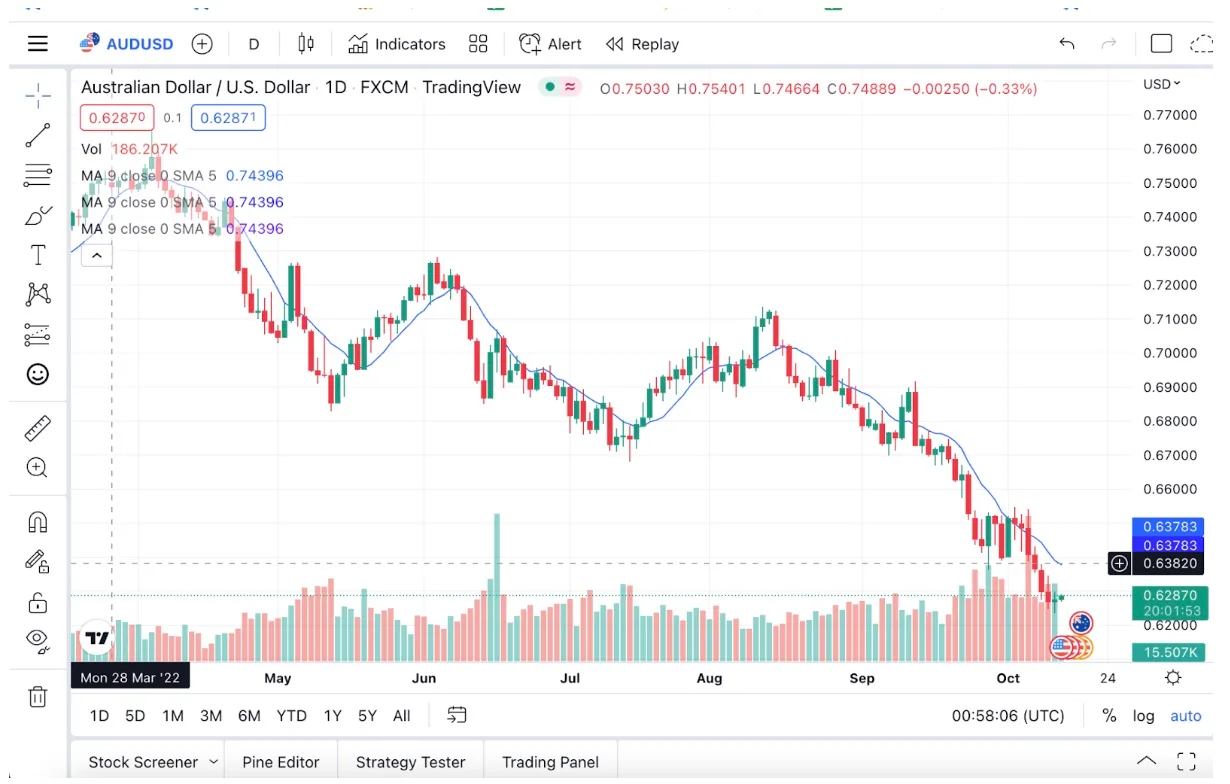If you're looking to trade forex, implementing a scalping strategy could work.
Here is what forex scalping is, how the strategy works and the risks involved if you were to implement the strategy.
What is scalping?
Forex scalping is a day trading tactic that involves buying or selling currency pairs within a few seconds or minutes, often executing multiple trades a day.
Effectively you are looking to make money off tiny micro trends.
A scalper isn't trying to get rich off one trade. Instead it is about small gains, known as pips.
Did you know: A pip is an acronym for "percentage in point" or "price interest point", which is the smallest price movement possible by an exchange.
They will open a position to buy (go long) if they think the price of currency will rise, or sell (go short) if they think the price will fall.
Traders will mostly target economic news or events. This can be anything from job data right through to interest rate changes.
In Australia forex trading is typically only available to wholesale/institutional investors.
Instead, most retail traders use CFD brokers to trade forex.
Many of these brokers offer the same tools that scalpers need such as technical analysis charts and trade bots.
Regardless of how you forex scalp, it is important to know it's incredibly risky, with Australian Securities & Investments Commission (ASIC) pointing out that 3 in 4 Aussie investors lose money.
What type of investor is suited to forex scalping?
While forex scalping is one of the simpler techniques investors can use, it still favours those who are more experienced and have a larger bank balance. This is because of the pace at which the market moves.
Due to leverage, even a small percentage change in a position can have a drastic impact on your portfolio. In Australia you can trade major currency pairs at 30 to 1. This means you can lose 30 times your investment.
As such, you want to know what you're doing before you start trading.
Finder survey: Which currencies do Australians trade the most?
Response | |
|---|---|
| AUD | 63.64% |
| USD | 54.55% |
| EUR | 21.21% |
| GBP | 13.64% |
| JPY | 12.12% |
| CAD | 7.58% |
| CHF | 7.58% |
| HKD | 4.55% |
| NZD | 4.55% |
| CNH | 3.03% |
| Other | 3.03% |
| SGD | 3.03% |
| MXN | 1.52% |
| NOK | 1.52% |
| None of the above | 1.52% |
| TRY | 1.52% |
Forex scalping strategies
While there are a few variations, trading strategies generally fall into a few broad-based categories.
Trend trading
If you're a trader you might want to follow the trend.
Trend trading is a strategy that involves using technical indicators to identify the direction of the market's momentum.
The idea behind trend trading is markets are predictable and will follow the same sort of historical trends in price movements as previous runs.
Broadly speaking there are 3 types of trends, being uptrends, downtrends and sideways trends.
If an asset is increasing in value it's an uptrend, while assets falling are known as a downtrend.
When the market is pricing in neither direction this is a sideways trend. If you're a forex scalper, this is usually the trend you're looking for.
This is because you can take advantage of extremely short-term market movements that are exactly going in either direction.
Countertrend trading
You might be able to guess this one but it's pretty much the opposite of trend trading.
A countertrend strategy attempts to make small gains by trading against the broader direction an asset is heading.
It is a form of swing trading that assumes assets will not go up or down in a straight line but instead look to make a profit on the drawbacks within the total trend.
Some investors will use countertrends to open a medium-term position, but it is also popular amongst scalpers.
Reversion to the mean trading
Finally, you can set a reversion to the mean strategy.
Mean reversion is a theory which suggests that assets will return to normal prices after an extreme price move.
To work out how to trade these assets you will need to calculate the mean for an asset. Once you've worked out the average price based on a number of data points, you can chart out where the price should fall using a simple moving average.
This strategy works for forex traders because the currency pairs are highly correlated assets.
As such, the price of the assets generally move together. When they are deviating from each other, this is where a trader has an opportunity.
Forex scalping indicators
For the most part, forex traders will use a variety of technical analysis techniques in order to trade the market.
Bollinger Bands scalping
The Bollinger Bands is a volatility and momentum tool that is often used by professional traders.
While it is not exclusively for forex, Bollinger Bands provide traders with distinct insights into price and volatility, helping create a unique entry and exit point for traders.
Traders using Bollinger Bands use W patterns to identify W-Bottoms when the second low is lower than the first low but is above the lower band.
Given that it is all but impossible to get 2 bottom lines that trade at the exact same price, simpler pricing is considered good enough to validate the pattern.
Traders will make decisions based on this pattern.

Source - TradingView
Moving average for scalping forex
This is used by scalpers to help give an indication as to which way the market is moving.
A simple moving average indicator is the most basic, it shows the average price of a trade over a specific time. The job of the scalper is to understand whether or not the price of the asset is going up or down.
There's also an exponential moving average which enables traders to give more weightage to recent prices. This is one of the better tools for scalping since it responds more quickly to recent price changes.
There are more complex trading strategies that you can also implement.

Source- TradingView
Pros and cons of scalping strategies
Pros
- Low barriers to enter the world of trading
- Viable option for retail traders / newer investors who have less knowledge of the market
- Given the size and liquidity of the market, can trade in and out easily
- It only takes a few minutes to scalp a market
Cons
- Forex is risky, especially with leverage
- Scalping requires a larger deposit
- You won't get rich off a trade
- Volatility or wild swings can exacerbate losses
What are the best pairs for scalping?
When it comes to scalping, traders could consider the major currency pairs such as AUD/USD, EUR/USD or even the GBP/USD. This is because the larger markets have a higher trading volume.
The higher trading volume means tighter spreads which can minimise losses. It can also mean you only need to move up a few pips in order to make a profit.
But even with major currency pairs, forex trading should be kept to more experienced traders.
When it comes to trading, these markets are usually the most active around financial news and earlier in the morning.
Is forex scalping profitable?
Scalping can be a profitable investment strategy, but it comes with a lot of risk and will require you to have a larger starting balance as well as the funds to cover any leverage, should the trade work against you.
As a scalper you need to make immediate decisions. The faster you can react to a situation, the better you will be as a scalper.
Meanwhile the longer you hold a position, the riskier it becomes.
While scalping (if done effectively) can make money, it is highly unlikely you can make a large profit on a single trade. This is because of the capital required.
For example, if you invest $100,000 and the pips move by 5 bps, you will only make $500. This is because you are trading on a fraction of a cent.
But the pace, size and times the market is open will mean scalpers have the option to constantly trade.
What are the risks involved with scalping?
Like all forex trading, scalping comes with a lot of risk and investors should know what they are doing before using any of these strategies.
The main risks are:
- You can wipe out your brokerage account pretty quickly
- Scalping usually involves leverage, which can result in greater losses
- It is a strategy that is based on quick decisions; move too slow and you can lose your investment
- If you get the trade wrong you can incur significant losses
5 steps to start scalping for a beginner
You can start forex scalping in just a few simple steps:
- Create a forex account that has access to a demo feature
- Read up on forex trading
- Use your demo account to practise what you've learnt
- Write a trading plan, including your strategy, how you will manage risk and what you can afford to invest
- Start trading
Choosing a broker that allows you to scalp
It is important to highlight that not all brokers are set up to let you scalp, so make sure you've read the company's product disclosure statement before you decide whether or not to open an account.
You will want 3 things from your broker:
- Low spreads – You are making a lot of trades so you will want a lower fee.
- A range of technical tools – In order to scalp you will need to closely watch markets. To do this you will need some advanced trading tools.
- Fast trade execution – You are only holding on for a few seconds or minutes at a time. This means you will want a broker that can match your trading. Being stuck in a position can cost you money, so fast trading is vital.
Bottom line
The forex market is incredibly large and liquid, allowing traders to capitalise through technical and fundamental analysis.
Scalping is also a viable trading strategy for retail investors.
However, with the large deposits required, leverage on trades and the speed at which the market moves, it is important that investors know what they are doing before they start trading.
If you are newer to investing this strategy might not be for you. Instead, you might want to take advantage of some of the free demo accounts on offer to hone your skills prior to trading.
Frequently asked questions
Ask a question
More guides on Finder
-
Global Prime review
Trade forex and CFD products with a platform offering competitive spreads and no minimum account sizes.
-
Admirals review for Australians
Start trading with an award-winning CFD and forex broker.
-
How do we rate forex trading platforms?
Trading forex is complicated enough without having to find the best broker. For this reason we've compared them for you.
-
18 best day trading and forex books
Whether you're a seasoned investor or just beginning, reading books can be a great way to learn. Here are our 15 recommendations for best forex books.
-
Eightcap broker review
Trade a wide range of global financial instruments, including forex, indices, commodities and share CFDs on Eightcap.
-
Pips, spreads and lots: Forex fees explained
How much does forex trading cost and what do terms like “spread” and “pips” mean? Find out here.
-
Forex trading in Australia
Interested in buying currency as an investment? Read our tips on being a forex trader and find out about the strategies that investors use to realise a profit.
